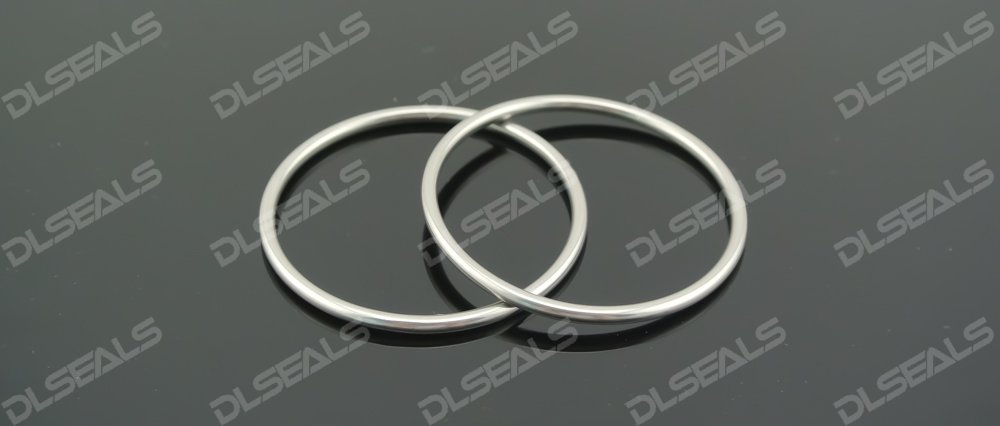
In marine engineering, equipment and components often face harsh environmental conditions such as high salinity, high humidity and strong corrosion. In order to ensure the stable operation and long-term durability of these equipment, it is crucial to choose the right seals. Metal O-rings have become an important choice in marine engineering due to their excellent corrosion resistance and reliable sealing performance. This article will explore the corrosion resistance of metal O-rings and their applications in marine engineering to help you understand how to select and apply these seals in marine environments.
1. Corrosion resistance of metal O-rings
1. Selection of high-quality materials
Metal O-rings are usually made of highly corrosion-resistant metal materials such as stainless steel, titanium alloys and nickel-based alloys. These materials have excellent corrosion resistance and can effectively resist the erosion of salt and other corrosive substances in seawater, thereby extending the service life of seals.
2. Anti-corrosion coating technology
To further improve the corrosion resistance of metal O-rings, many manufacturers will treat their surfaces with anti-corrosion coatings. These coatings not only enhance the resistance of metal surfaces to corrosive media, but also improve the overall durability of metal O-rings. Common coatings include zinc plating, chrome plating, and fluorocarbon coatings.
3. Precision machining process
The manufacturing process of metal O-rings usually includes precision machining processes to ensure that the geometry and size of the seals are accurate. This high-precision machining process helps to improve the sealing performance of the seals and reduce the risk of failure caused by corrosion.
4. High temperature resistance
In marine engineering, metal O-rings not only need to deal with corrosion, but also need to withstand high temperature environments. Therefore, the selection of metal materials and designs with good high temperature resistance can ensure that the seals can still operate stably under extreme conditions.
2. Application of metal O-rings in marine engineering
1. Offshore platform equipment
Equipment on offshore platforms, such as drilling rigs, pumps, and valves, is often exposed to high salinity and high humidity environments. Metal O-rings are widely used in the sealing systems of these equipment due to their excellent corrosion resistance and sealing effect to ensure the normal operation of the equipment and reduce maintenance costs.
2. Submersibles and unmanned submarines
In the design of deep-sea submersibles and unmanned submarines, metal O-rings are used in various sealing parts, such as cabin seals, transmission system seals, etc. Due to the high pressure and high corrosiveness of seawater, the corrosion resistance of metal O-rings is crucial to ensure the safety and reliability of submersibles.
3. Offshore wind power equipment
Offshore wind power equipment, such as wind turbines, needs to operate stably for a long time in extreme marine environments. Metal O-rings are used in bearings, gearboxes, and cable interfaces of wind power equipment to provide reliable sealing effects, prevent seawater intrusion, and reduce equipment failures.
4. Offshore pipelines and valves
Metal O-rings in offshore pipeline and valve systems are used to prevent the leakage of liquids and gases. In the marine environment, the corrosion resistance of these seals can effectively ensure the sealing performance of pipelines and valves, thereby reducing the risk of leakage and maintenance work.
5. Marine measurement and monitoring equipment
In marine measurement and monitoring equipment, metal O-rings are used to ensure the sealing of sensors and instruments. These devices need to work stably and for a long time in a highly corrosive marine environment. The corrosion resistance of metal O-rings helps ensure the accuracy of data collection and the long-term reliability of the equipment.
III. Precautions for selecting metal O-rings
1. Material selection
Select suitable metal materials, such as stainless steel, titanium alloy or nickel-based alloy, according to the specific application environment. Different materials have different corrosion resistance and mechanical strength. Selecting the right material can ensure the best performance of the seal in the marine environment.
2. Surface treatment
Choose metal O-rings treated with anti-corrosion coatings to enhance their resistance to seawater and other corrosive media. Coating technology can significantly improve the durability and long-term stability of seals.
3. Precision and size
Ensure that the size and precision of the metal O-rings meet the design requirements of the equipment. Accurate size and processing technology can provide better sealing effect and reduce the risk of failure caused by corrosion.
4. Environmental adaptability
Consider the high temperature and pressure resistance of metal O-rings to ensure their stable operation in the marine environment. Select suitable seals according to specific working conditions to cope with extreme environmental challenges.
Conclusion
Metal O-rings have become an indispensable sealing solution in marine engineering with their excellent corrosion resistance, reliable sealing performance and wide application fields. By understanding the corrosion resistance characteristics of metal O-rings and their applications in marine engineering, you can make more scientific choices to ensure the long-term stable operation of equipment. When selecting and applying metal O-rings, considering material selection, surface treatment, dimensional accuracy and environmental adaptability will help improve the sealing effect and the overall reliability of the equipment.
Post time: Aug-21-2024
